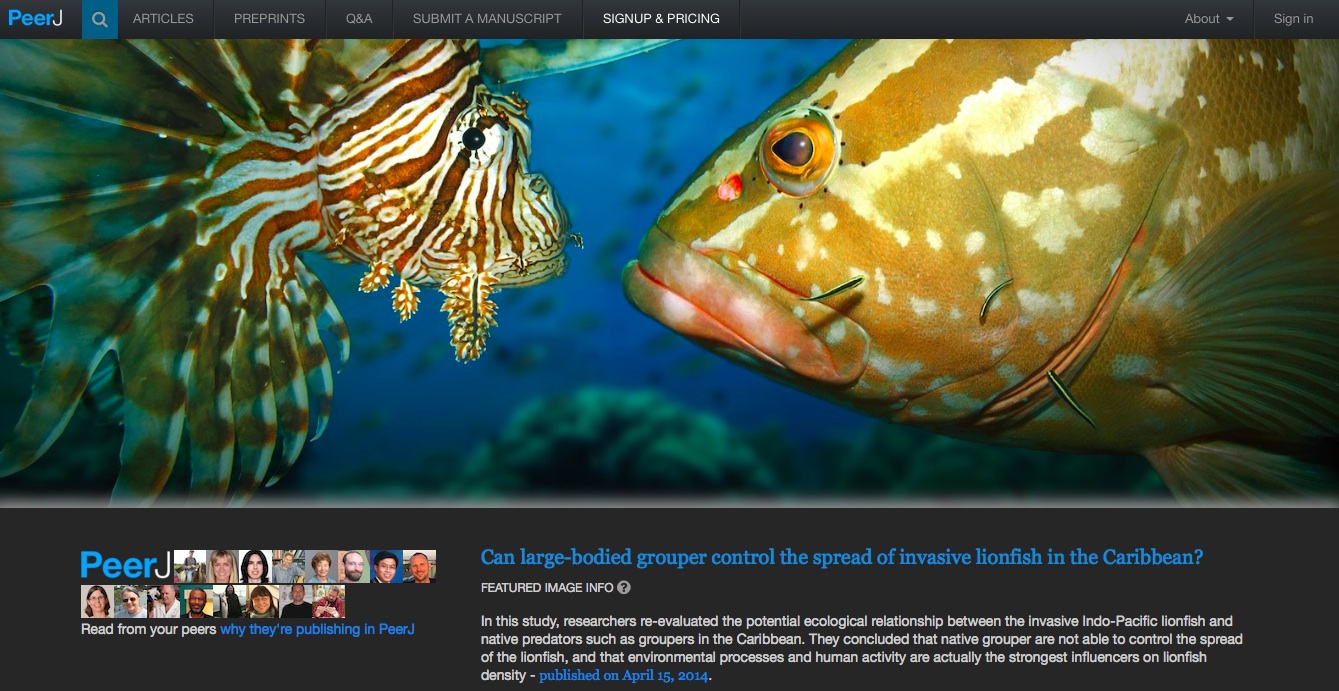I LOVE this interview PeerJ just posted (and excerpted below) with Bruno lab PhD student Abel Valdivia about our new paper on lionfish and biotic resistance.
PJ: What were your motivations for undertaking this research?
AV: The invasion of lionfish into the Caribbean basin over the past ten years provides a unique possibility to study marine species invasion at a large geographical scale. Species invasion is one of the major threats the oceans face today, and can be closely related to issues such as fishing and climate change. With rising temperatures due to global warming, several marine species are shifting their geographical range; occupying new environments; establishing new ecological interactions with established residents, and therefore changing the community structure and composition of the invaded systems. Marine invasions due to human introductions or ocean warming are important to understand at a large spatial scale since it will be a very common phenomenon in the near future.
Lionfish have spread to every shallow and deep habitat of the Western Atlantic and the Caribbean, including coral reefs environments, seagrass meadows, mangrove root systems, estuarine habitats, and even depths over 90 meters. Lionfish have even been reported in the colder waters near Boston, Massachusetts. We are still investigating the negative impacts of this invader on all of these already disturbed ecosystems, but one thing is clear – their voracious appetite threatens small fish and juveniles of depleted fish populations including commercially and ecologically important species such as groupers, snappers, and herbivores. The failure of the Caribbean region to constrain invasion success may be partially associated with the lack of native predatory capacity due to overfishing, or simply to weak biotic resistance by native predators and competitors to a novel predator.
PJ: How would you say your study is controversial?
AV: Over the past few years some studies have hinted that native groupers could potentially prey on invasive lionfish and therefore act as natural bio-control of the invader. There is one study that reported lionfish in the stomachs of at least two species of large groupers. However, it was not clear if the lionfishes were already dead when the groupers ate them. Another study found a negative relationship between the biomass of native Nassau grouper and lionfish at a relative small spatial scale in the Exuma Cays Land and Sea Park in the Bahamas. In fact, we were excited to test the generality of this negative relationship in a paper published last year. Unfortunately, we did not find any evidence that grouper or any other predators (including sharks) or competitors (same size native predators) were negatively related to lionfish and concluded that other physical environmental variables and culling were the main drivers of lionfish distribution and abundance.
Our current study expands on those findings by adding new factors that are known to affect fish abundance (e.g., fishing and reef structural complexity). We also tested whether lack of native predatory capacity was an issue across the Caribbean. While some reefs actually had a low abundance of native predators due to overfishing, other well-protected reefs with high abundances of sharks, groupers and snappers exhibited a high abundance of lionfish. Therefore, the lack of predatory capacity does not limit the control of the invader. In general there is actually little to no evidence that abundant native predators can constrain the distribution and abundance of invasive predators. For example, the expansion and proliferation of the invasive Burmese python in the Florida Everglades was never constrained by the abundant native American alligator.
Read the rest here

Leave a Reply